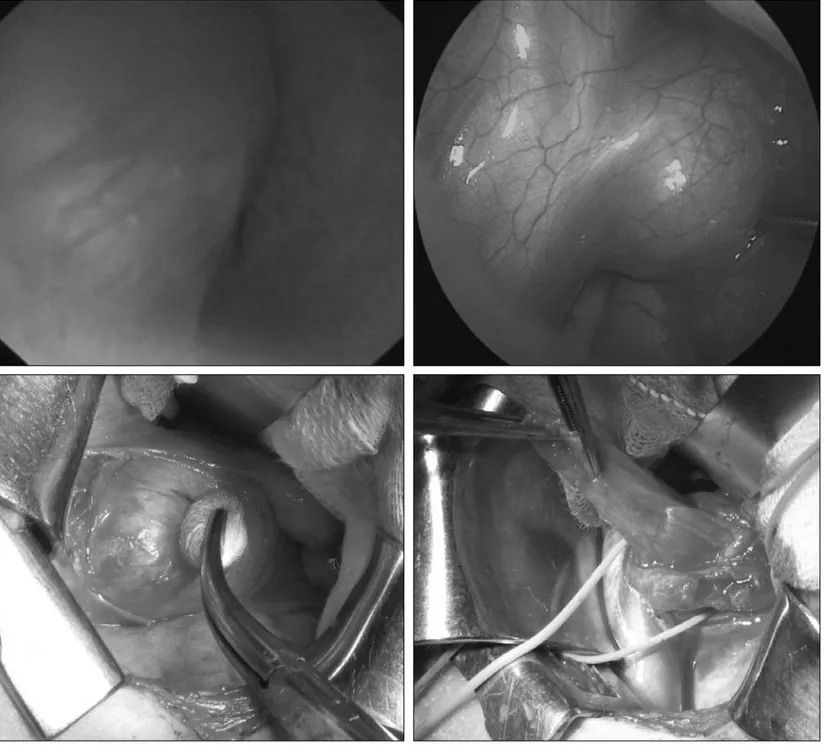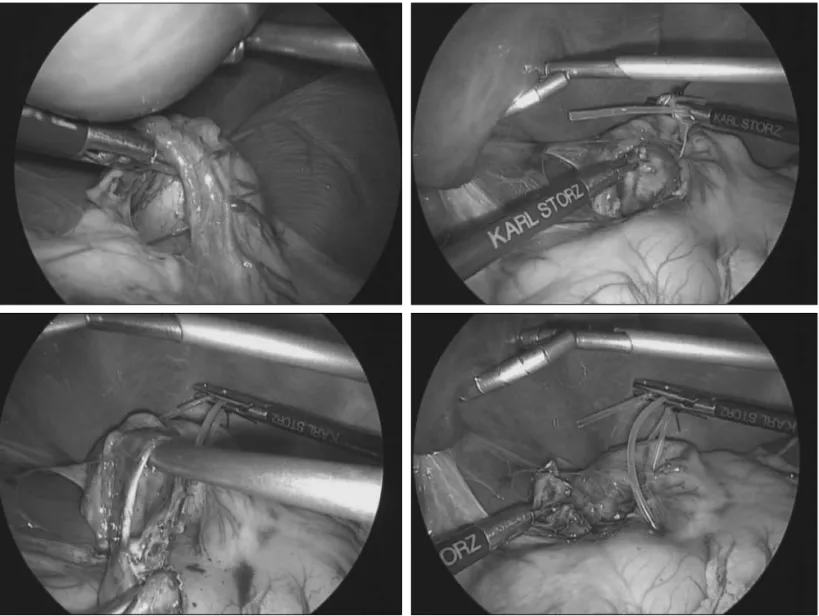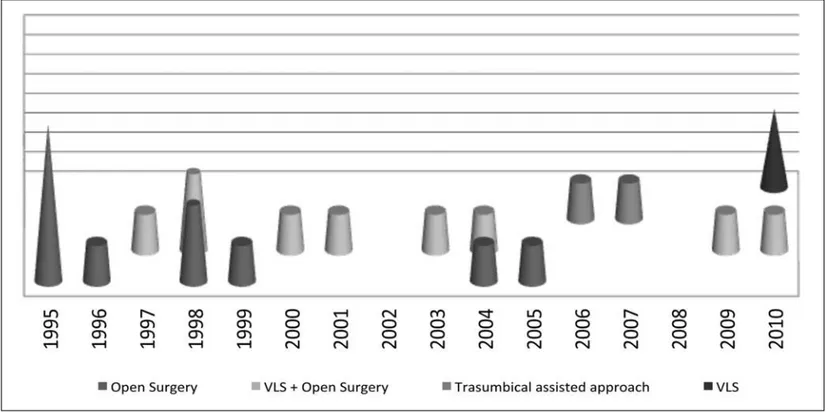Abstract
Background: gastrointestinal tract duplications (Atd) are rare malformations that occur with an incidence of 1 in 4000-5000 live births, with heterogeneous clinical pictures in relation to the differ-ent location and size. the purpose of this study was to analyze the role of minimally invasive surgery in the management of Atds, through a critical analysys of 15 years of experience of the depart-ment of Paediatric Surgery, university of Bologna.
Methods: the medical records of 22 children diagnosed with Atds were retrospectively reviewed (January 1995–August 2010). the study analyses: clinical presentation, preoperative diagnosis, site, anatomic type, treatment, and outcome.
Results: Children were 16 males and 6 females, with age ranged from 1 day to 10 years. 20 Atds (91%) were cystic type, while 2 cas-es (9%) were tubular one. during the first period of our experience, 10 (45.5%) cases were approached with an open surgery. then sub-sequent 8 (36.4%) cases were treated with a diagnostic laparoscopy. this approach permitted also to perform a minilaparotomy, close to the site of the malformation, with a short length of the scar. in 2
cas-es (9%), we realized an ileal rcas-esection with end-to-end anastomosis with a trans-umbilical video-assisted procedure.
in 2 cases (9%), we performed a complete removal of the lesions, after complete ligation of the vascular pedicle through a laparo-scopic approach.
10 cases (45.5%) were located in the ileum, 6 cases (27.3%) were esophageal duplication, 3 cases (13.6%) were gastric duplications, 2 cases (9%) were located in the colon-rectum.
the postoperative course was uneventful in all the cases.
Discussions and conclusions: this study shows how, in the manage-ment of intestinal duplications, a mininvasive approach, is increas-ingly taking the field, along with increasing the “learning curve” with laparoscopy. in experienced hands, the laparoscopic approach allows an accurate definition of the exact site of duplication and a miniinvasive treatment with similar principles of open techniques.
Introduction
Alimentary tract duplications (Atds) are rare anomalies. they fre-quently present a diagnostic challenge because they often mimic other disease entities at presentation, even after radiological investi-gation (1). often they are discovered incidentally either prenatally or postnatally (2). therapy continues to evolve thanks to minimal-ly invasive surgical techniques (Schleef and Schalamon 2000) (1). the initial aim of laparoscopy is to locate the cyst exactly and to obtain a better idea of its nature. the procedure may then be con-tinued as a therapeutic laparoscopic procedure in which the cyst is removed with a totally laparoscopic approach or with a video-assist-ed technique. We report the experience of the department of Pae-diatric Surgery, university of Bologna, in the treatment of Atds in order to study the role of mini-invasive surgery in the management of these kinds of malformations.
Role of mini-invasive surgery in the treatment
of enteric duplications in paediatric age:
a survey of 15 years.
Il ruolo della chirurgia mini-invasiva nel trattamento delle duplicazioni intestinali: l'esperienza di 15 anni
M. Lima,1F. Molinaro,1G. Ruggeri,1T. Gargano,1B. Randi1
Key words: enteric duplications, laparoscopic surgery, intestinal duplications.
1 department of Paediatric Surgery
Paediatric Surgery unit, university of Bologna indirizzo per la corrispondenza (Corresponding author): Prof. Mario lima, M.d.
department of Paediatric Surgery
Paediatric Surgery unit, university of Bologna Via Massarenti 11,
40138 Bologna, itAlY tel.: +39 0516364985 Fax: +39 0516363657 e-mail: [email protected]
Mri) in two cases. a colonoscopy.
Figure 1. Combined esofagoscopy, thoracoscopy and thoracotomy for excision of an esophageal duplication.
20 Atds (91%) were of the cystic type, while 2 (9%) cases were tubular.
during the first period of our experience, 10 (45.5%) cases were approached with an open surgery. then, subsequent 8 (36.4%) cas-es were treated with a diagnostic laparoscopy. this approach per-mitted also to perform a minilaparotomy, directly close to the site of the malformation, with a shorter length of the scar (Figure 1). in
2 cases (9%), we performed an ileal resection with end-to-end anas-tomosis with a trans-umbilical video-assisted procedure (Figure 2). in 2 cases (9%), a complete removal of the lesions was done, after ligation of the vascular pedicle completely by a laparoscopic approach (Figure 3). As showed in the Figure 4, the evolution of the surgical treatment was characterized from the absence of only open surgery in the last five years.
Table 1
ChARACTERisTiCs oF ThE sTUdy popUlATion.
Patient Age at the treatment Localization Clinical presentation Diagnostic exams Treatment Year of treatment
1 5 ys Jejuno-ileal Rettorragy Abdo-Us + Upper-Gi X-Ray + Vls + laparotomy 2001
Es + Cs + Barium enema + Videocapsule
2 4 ys Esophageal dysphagia Abdo-Us + Upper-Gi X-Ray + Ts + thoracotomy 2003
Chest X-Ray
3 2 mm Jejuno-ileal prenatal diagnosis Abdo-Us + Barium enema + laparotomy 2004
Upper-Gi X-Ray
4 10 ys Jejuno-ileal Recurrent abdominal pain Abdo-Us TUARA 2006
5 1 ys Gastric prenatal diagnosis Abdo-Us + Upper-Gi X-Ray + Es Vls + laparotomy 2004
6 1 ys Esophageal dysphagia Abdo-Us + Upper-Gi X-Ray + Thoracotomy 1995
Chest X-Ray
7 10 ys Colo-rectal Rettoragy Abdo-Us + Barium enema laparotomy 1995
8 5 ds Colorectal Rettoragy Abdo-Us laparotomy 2005
9 5 ys Jejuno-ileal small bowel occlusion Abdo-Us + plain abdo- X-Ray laparotomy 1996
10 2 ys Jejuno-ileal Recurrent abdominal pain Abdo-Us Vls + Mini-laparotomy 1998
11 1 ys Jejuno-ileal Recurrent abdominal pain Abdo-Us Vls + Mini-laparotomy 1998
12 5 mm Esophageal prenatal diagnosis Abdo-Us + Upper-Gi X-Ray + Ts + thoracotomy 2009
MRi + Chest X-Ray
13 2 ys Colo-rectal Recurrent fever and Abdo-Us + MRi Vls 2010
abdominal pain
14 4 ys Gastric Recurrent abdominal pain Abdo-Us + MRi Vls + laparotomy 2000
15 3 ys Jejuno-ileal dysphagia Abdo-Us + Upper-Gi X-Ray TUARA 2007
16 8 ys duodenal dysphagia Abdo-Us + Upper-Gi X-Ray laparotomy 1998
17 10 ys duodenal dysphagia Abdo-Us + Upper-Gi X-Ray laparotomy 1995
18 1 ys Gastric prenatal diagnosis Abdo-Us + Upper-Gi X-Ray + Vls 2010
Es + MRi
19 10 ds Esophageal polidramnios prental diagnosis Abdo-Us + Upper-Gi X-Ray + Ts + thoracotomy 2010
Es + Chest X-Ray
20 3 ys Jejuno-ileal Recurrent abdominal pain Abdo-Us + MRi laparotomy 1997
21 3 ys Esophageal dysphagia Abdo-Us + Upper-Gi X-Ray + Thoracotomy 1998
Chest X-Ray
22 6 ys Jejuno-ileal hemoperitoneum Abdo-Us laparotomy 1995
Es: esophagoscopy, Cs: colonoscopy, Vls: videolaparoscopy, Ts: thoracoscopy, TUARA: transumbilical assisted resection and anastomosis Figure 2.
Atds are rare anomalies. the most commonly affected site is the small intestine (47% of all cases), followed, in order, by the large intestine (20%), esophagus (17%), stomach (8%), and duo-denum (5%).3
the origin of duplications is uncertain. ladd coined the term ali-mentary tract duplications in 1937, which more effectively described the clinical and pathologic aspects of these lesions.4 in
cells, can be found in its wall. Malignant changes are a rare com-plication of alimentary tract ducom-plications in adults.8
they frequently present a diagnostic challenge because they often mimic other disease entities at presentation, even after radiological investigation. often they are discovered incidentally either prena-tally or postnaprena-tally.2therapy continues to evolve thanks to
mini-mally invasive surgical techniques.1the initial aim of laparoscopy is
Figure 3. laparoscopic enucleation of a gastric duplication.
to locate the cyst exactly and to obtain a better idea of its nature. the procedure may then be continued as a therapeutic laparoscopy to remove the cyst.
there appears to be a discrete increase in the incidence of this type of pathology due to an increased detection by ultrasound, and espe-cially by prenatal ultrasound. When a prenatal diagnosis of an intra-abdominal cyst is made, the operation is best scheduled in the sec-ond half of the first year.1intra-abdominal cysts should not be left
in place as they can give rise to potentially lethal complications.2
A topographical diagnosis is important before deciding how to remove the lesion. Computed tomography (Ct) or magnetic resonance imag-ing (Mri) are more helpful in determinimag-ing the exact position of the lesion than in diagnosing the exact nature of it.9laparoscopy not only
confirms the diagnosis, but also identifies the exact localization.10
this diagnostic procedure may be extended into a therapeutic one according to the surgeon’s experience.9,10depending on the
local-ization and nature of the cyst, many surgical approaches are possi-ble. Complete removal is the approach of choice, but is not always possible without damaging adjacent organs. enucleation of the cyst may endanger the blood supply of other organs, which is the reason why the lesion is often resected together with the adjacent bowel during open surgery.11laparoscopy, in contrast, gives a much
bet-ter view of the vascularization of the lesion and adjacent organ allowing for resection of the lesion only without jeopardizing the blood supply of the remaining organ. laparoscopic enucleation is therefore almost always possible with minimal blood loss.12
however, when the tension in the cyst decreases the plane of sepa-ration is less easy to find.13
Sometimes, however, removal of enteric duplications or other abdominal cysts may require the closure of an accidentally opened
bowel, or resection of the lesion together with a tract of bowel with subsequent anastomosis.12
in the past, for these reasons we treated these lesions directly by an open surgery. As the laparoscopic learning curve grows, we began to perform a laparoscopic approach in order to better focus the entity of the problem. then the resection of the lesion was done outside through a minilaparotomy, first, and then laparoscopically inside the abdomen.
if a laparotomy is required, a much smaller incision will suffice when compared to a laparotomy without prior laparoscopic explo-ration and/or dissection.14endolinear staplers may be useful but we
are concerned about leaving metallic clips in a child’s abdomen for a lifetime.
According to our experience it is probably better to perform a trans-umbilical videoassisted procedure, which many authors consider an evolution of the totally laparoscopic approach. transumbilical approach, in fact, allows an easy access to entire small bowel, especial-ly in the newborn, and permit to perform a safe bowel resection with a subsequent anastomosis under direct vision, outside the peritoneum. the advantages of the totally laparoscopic approach are present in the video-assisted technique, without impeding the effectiveness of the planned operation.
Anyway, we reported the evolution of the treatment in our pop-ulation, showed in the Figure 4, and we noted that the distribu-tion of the surgical treatment was characterized by the absence of only open surgery in the last five years; this fact, the increas-ing of the laparoscopic learnincreas-ing curve and the development of mini-invasive surgical approaches, as the transumbilical videoas-sited technique, show the real role of mini-invasive surgery in the management of Atds.
Figure 2. Transumbilical videoassisted resection of ileal duplications with subsequent anastomosis.
with a tract of bowel and subsequent anastomosis directly through the umbilicus, with good esthetic results.
our experience shows as, nowadays, laparoscopic approach seems to have a diagnostic and therapeutic role in the management of Atds.
References
1 Schalamon J, Schleef J, höllwarth Me. experience with gastro-intestinal
duplications in childhood. langenbecks Arch Surg. 2000;385:402-5.
2 Foley Pt, Sithasanan n, Mcewing r, lipsett J, Ford Wd, Furness M.
enteric duplications presenting as antenatally detected abdominal cysts: is delayed resection appropriate? J Pediatr Surg. 2003;38:1810-3.
tract duplications in infants and children: from oesophagus to rectum. Pedia-tr radiol. 2007;37:691-9.
10 Bratu i, laberge JM, Flageole h, Bouchard S. Foregut duplications: is
the-re an advantage to thoracoscopic the-resection? J Pediatr Surg. 2005;40:138-41.
11 Carachi r, Azmy A. Foregut duplications. Pediatr Surg int.
2002;18:371-4.
12 teklali Y, Kaddouri n, Barahioui M. gastrointestinal system duplications
in children (19 cases). Arch Pediatr. 2002 Sep;9:903-6.
13 Merrot t, Anastasescu r, Pankevych t, tercier S, garcia S,
Alessandri-ni P, guys JM. duodenal duplications. CliAlessandri-nical characteristics, embryologi-cal hypotheses, histologiembryologi-cal findings, treatment. eur J Pediatr Surg. 2006;16:18-23.
14 Srivastava P, gangopadhyay An, Kumar V, upadhyaya Vd, Sharma SP,
Jaiman r, hasan z. noncommunicating isolated enteric duplication cyst in childhood. J Pediatr Surg. 2009;44:e9-e10.


